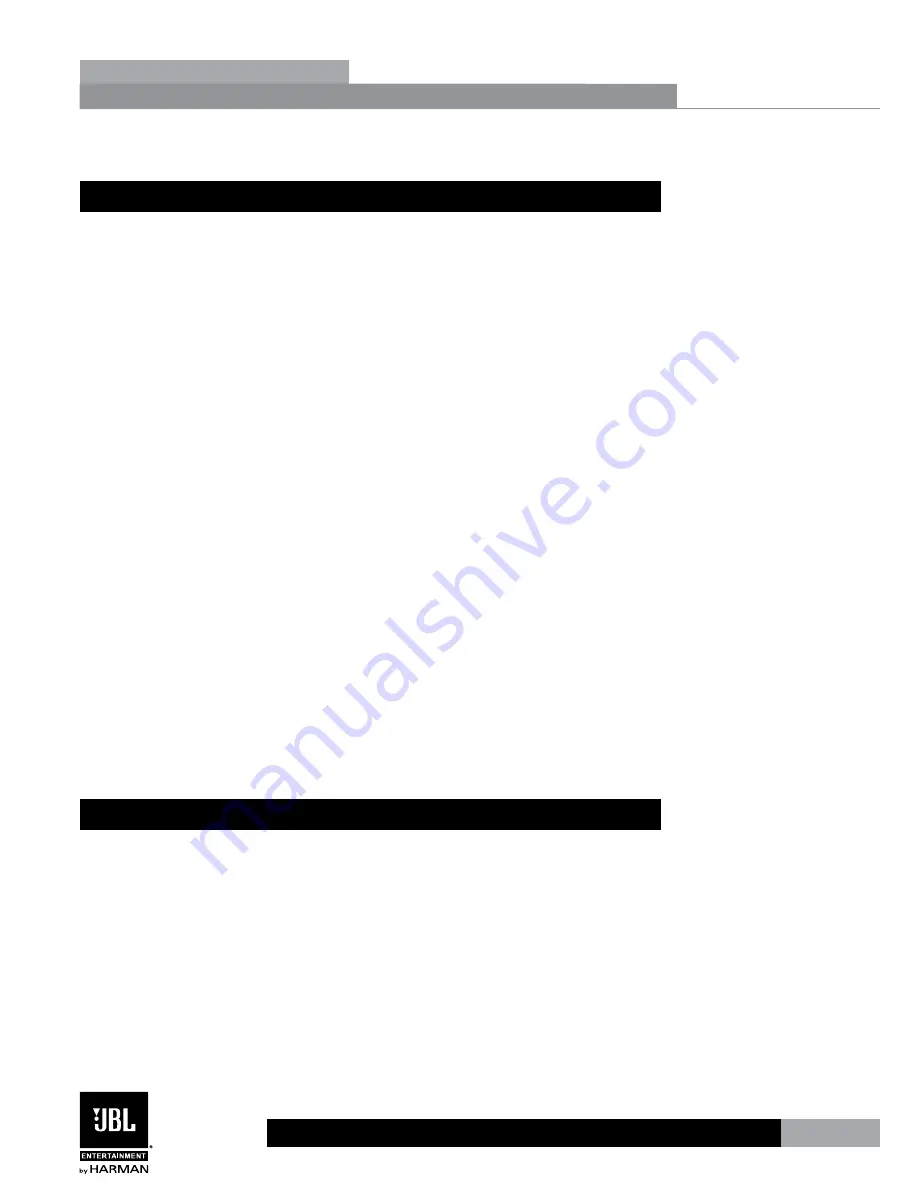
11
KX200
Section 3
Processing & Parameters
•
Echo PEQ (5 Bands)
3.4 REVERB
Reverb is the ambient sound of various live environments such as clubs, studios, concert halls,
etc… Much like the Echo effect, it is used for enhancing the sound of vocals to make them
more interesting.
Reverb Parameters
The Reverb algorithm contains the following parameters:
• MIC Dry Level (-40 – 10 dB) - This parameter adjusts the overall level of the
microphone input.
•
Reverb Level (-40 - 0 dB) - This parameter adjusts the overall level of the reverb effect.
Use this parameter to add just the right amount of reverb effect to the source signal.
•
Reverb Pre-Delay (0 - 100 ms, range is preset dependent) - This parameter adjusts
the amount of delay time before the reverb effect becomes audible. Higher values can
create the illusion of a much larger room as it mimics the time that it would take for
reflections from very distant surfaces to reach the listeners ears.
• Reverb Time (200 ms – 4000 ms) - This parameter adjusts the amount of time that it
takes for the reverb to die out. Higher values create the illusion of a larger space or
harder more reflective surfaces.
•
Reverb LPF (20 Hz - 20000 Hz) - This parameter adjusts the frequency of the reverb
low pass filter. Lower values will allow the lower frequencies to pass through the reverb
effect creating a fuller, darker reverb, whereas higher values will begin cutting off lower
frequencies, which can make a reverb sound thinner and sit better in a busy mix.
•
Reverb HPF (20 Hz - 20000 Hz) - This parameter adjusts the frequency of the reverb
high pass filter. Lower values yield a darker sounding reverb, whereas higher values
create a brighter sounding reverb effect.
•
Reverb PEQ (5 Bands).
3.5 EQ
EQs allow you to shape the tone of the audio signal. Sometimes these EQs are needed at
various stages of the signal path. The KX200 has Output EQs (for equalizing the overall sound
system) and Input EQs (for shaping the tone of the input sources). The KX200 provides 8
Band EQs on the left, right, center and surround outputs, a 5 Band EQ on the sub output, 15
Band EQs on the microphone inputs and 8 Band EQs on the music inputs.
EQ Parameters
The EQ algorithm contains the following parameters:
•
Filter Type (PEQ, Low shelf, High shelf) - The Type selector allows you to select which
type of filter you would like to use on each band.
1.
PEQ: Manipulates a set range of frequencies, out in both directions from the center
frequency, with the ‘Q’ parameter determining the width.
2.
LP shelf: Manipulates all frequencies below the set frequency.
Содержание KX200
Страница 1: ...Owner s Manual KX200 DIGITAL PROCESSOR...
Страница 23: ...KX200...
Страница 24: ...3 mm 240V CSA UL...
Страница 25: ...E N L L N E 2 5...
Страница 28: ...2 KX200 1 1 2 www jblpro com JBL www jblpro com JBL...
Страница 29: ...KX200 2 3 2 2 1 KX200 1 KX200 VOD A B 2 KX200 3 4 KX200...
Страница 35: ...9 KX200 3 3 3 1 KX200 15 VOD 8 8 8 5 8 KX200...
















































